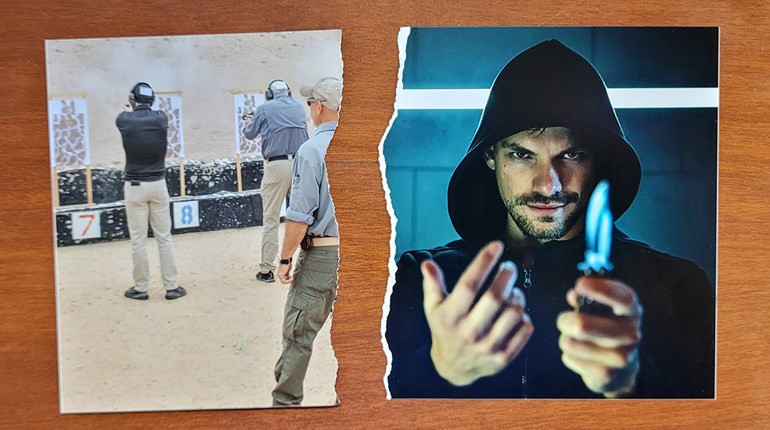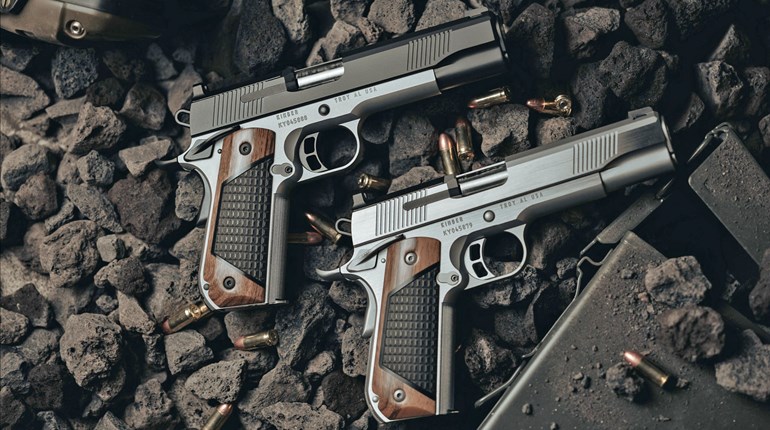
During the time I was a county sheriff, an informant came to me with the news that a man wanted for murder was hanging out in our town. I checked it out with the reporting agency and then made plans to arrest him. It turned out that he was staying in a large travel trailer that had two exterior doors.
Once I had officers set up on the perimeter, my Chief Deputy and I approached the trailer and hit both doors at once, he taking the front door and I taking the one at the back end of the trailer. As I jerked the door open I saw the suspect sitting on the edge of the bed, quite near to my door, in the act of dressing. I gave him the usual command that I gave to potentially dangerous people, “Don’t move or I’ll shoot you.”
The suspect seemed startled and confused. He would look at me and then he would look over to his left, where a hallway entered the bedroom. He would try to move and then stop. I finally realized that, while I was telling him not to move, my Chief Deputy was in that hallway telling him to put his hands up. We finally got things sorted out without anyone getting shot.
What was happening was that, while we were actually only a few feet apart, my deputy and I did not hear each other yelling at the suspect. It is a phenomenon that is called auditory exclusion.
Auditory exclusion is an integral part of the fight-or-flight syndrome. Under the stress of something that can potentially hurt or kill us, we can get to the point of not hearing sounds that would otherwise be quite clear. It has been suggested that this could be caused by the heightened heart rate, or it could be due to a tightening of the ear drums that might occur in the fight-or-flight mode. I’ve heard both suggested.
What it means to those of us faced with a deadly encounter is that we just won’t hear normally. Close gunshots may sound like distant firecrackers. We may be aware that someone very close to us is talking, but we just can’t make out what they are saying. We might not even hear the big diesel truck that is bearing down on us.
About the best solution to auditory exclusion is to, first, be aware that it can happen. And, knowing that our hearing is impaired, we should rely even more on our vision. When defensive instructors tell you that you should look and assess after an encounter, they are telling you the truth. Survival may well depend upon constantly checking out what is going on all around us.
To make it worse, those of us who shoot a lot and/or are getting some age on us are also subject to a natural loss of hearing. Imagine that you have just survived a deadly encounter and, while still focused on the threat, hear something behind you. Without thinking, you turn, gun in hand, to see what’s going on. What’s going on turns out to be a police officer who has been telling you to drop the gun. You can imagine what is fixing to happen.
There is just not a good fix for impaired hearing, especially if it is auditory exclusion. While I dislike the use of cliches, “Keep Your Head On A Swivel” does seem to apply here. Your vision has to take up for your loss of hearing until things get sorted out and back to normal.
There are other physical characteristics of the fight-or-flight syndrome and we’ll discuss those in future columns.






































